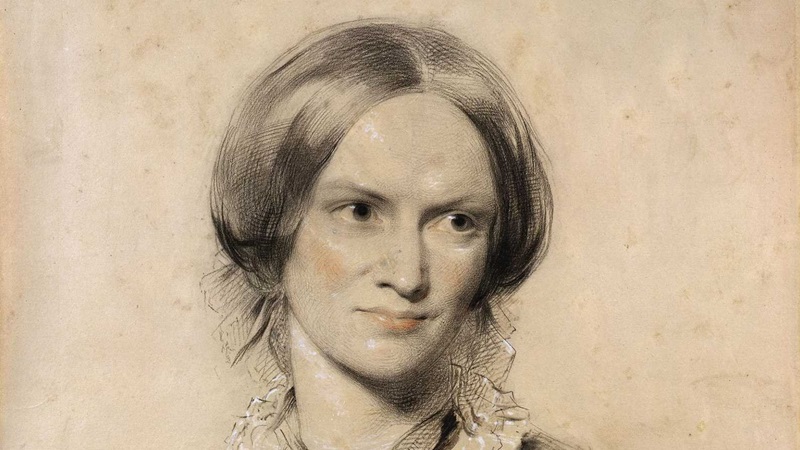Blog Post
The Christian genius of Charlotte Brontë
By Jonathon Van Maren
For my wife’s birthday several years ago, I tracked down a copy of Harper’s Weekly from May 16, 1857. It was filled with gossip from the royal houses of Europe; news from various mission fields and Bible societies (including an update on The Reverend Mr. Spurgeon and the state of the Metropolitan Bible Tabernacle), a few long poems, and some ponderous prose. But the article that prompted the purchase was a two-page piece titled “Currer Bell and Her Sisters,” written just two years after Charlotte, the last surviving Brontë sister, died at the age of 38.
Currer Bell was Charlotte’s penname, and the essay detailed the story of the six Brontë siblings—the dissolute brother, the eccentric father, and the extraordinary sisters who died so young. “Let us look into the Haworth parsonage at the close of the year 1846,” the author began. “Charlotte Brontë is thirty years old, her sisters three and six years younger. The father is threescore-and-ten, and almost blind. Branwell is a habitual drunkard, and an opium-eater. His paramour supplies him with money, which is spent in vicious indulgence.”
The essay describes the publication of Jane Eyre and marvels at the genius of Emily, Anne, and Charlotte. Branwell’s death (his illness exacerbated by drink) is detailed is chilling terms. He asked to be raised to his feet as he felt the end approaching: “So it was done; and he fronted the King of Terrors standing…‘He is in God’s hand,’ wrote Charlotte, ‘And the All-Powerful is likewise All-Merciful.’” Emily and Anne died of tuberculosis shortly thereafter. Emily never left the house alive after the Sunday succeeding Branwell’s death, and her dog howled for days when she passed.
Charlotte’s brief encounter with happiness after her marriage in 1854 is also described. When she fell ill during pregnancy—her biographers cite hyperemesis gravidarum as the cause—she woke at one point and saw her husband bending over her, praying fervently. As the essay records: “’Oh,’ she whispered, ‘I am not going to die, am I? He will not separate us; we have been so happy’…But her earthly days were numbered, and on the last day of March 1855, passing from that old gray parsonage amidst the wild moors, she entered the glories of the celestial city. On Easter Sunday, all that was mortal of Currer Bell was committed to dust in the sure hope of the resurrection to eternal life through our Lord Jesus Christ.”
“Currer Bell and Her Sisters” closed by reminding readers that there was yet one Brontë left: “The childless father—an old man of more than fourscore—still for a brief space remains in the old parsonage, begirt by the grave-yard in which have been laid all save himself of that household and who had come thither a full generation before.” As the fame of his deceased daughters grew, Rev. Patrick Brontë patiently bore the attentions of legions of readers who came to the parsonage to see where his girls had written their masterpieces and to gawk at him, the only survivor of what was arguably England’s most magnificent literary family.
As the essay in Harper’s Weekly illustrates, the Christianity of that period undergirded everything. This brings me to a new edition of Jane Eyre, published earlier this year with “A Guide to Reading & Reflecting” by literary scholar Karen Swallow Prior, who currently serves as Research Professor of English and Christianity and Culture at Southeastern Baptist Theological Seminary. Beautifully bound between cloth covers, this new edition—and Prior’s insights—are an essential addition to any Brontë devotee’s collection. I found myself hoping, as I read the “Introduction to the Author,” that Prior will attempt a longer biography at some point.
Prior examines how Jane Eyre constituted a “revolutionary” work which “gave powerful expression to the modern sense of the self” that was rooted, in part, in the Protestant Reformation. She details the various aspects of Jane Eyre (which was my favorite Brontë novel—I was also embarrassingly partial to Emily’s Wuthering Heights) modelled on Charlotte’s personal experiences. The overview of Gothicism, Romanticism, neo-classicism, and the development of literature at the time is simultaneously brief, comprehensive, and helpful. More literary profs should write this way.
The Guide is littered with insights like this one, which will immediately transform any reader’s understanding of the literature of this period:
The reason so many novels from the eighteenth and nineteenth centuries feature an orphan is that such a figure serves as a metaphor for what we all are in modernity: autonomous individuals with a will, burdened with the task of forging an identity. The conditions of the modern age that both allow and compel us to choose for ourselves (or so we believe) our religion, our class, our job, and our marriage partner are aptly symbolized by the figure of the orphan who is ‘heir’ to nothing. The story of Jane—who enters the narrative as an orphan with no place to call home and no one to love—is the story of a modern, self-conscious self on a quest to discover who she is.
But the greatest asset of this new edition is Prior’s guide to “Reading Jane Eyre as a Christian Today.” She notes that at the time, the novel was seen by some as “an affront to Christianity,” and that Brontë herself addressed these criticisms in the preface to the second edition. Brontë’s rebuttal—which I had not read—is a fascinating rebuke to the prejudices of her time: “Conventionality is not morality. Self-righteousness is not religion. To attack the first is not to assail the last. To pluck the mask from the face of the Pharisee, is not to lift an impious hand to the Crown of Thorns.” Words as relevant now as they were then.
“As she strives to create a sense of self within a set of conditions in which almost nothing is a given, Jane does so as a committed Christian,” Prior writes. “Even the heavy Romantic influences are transformed by Brontë’s Christian faith.” Reading Jane Eyre as a Christian means reading Charlotte Brontë as a Christian. Without that context, the story makes no sense. Christians of the time may have been happy to cede Jane Eyre to the progressives, but Prior will not give her up so easily: “The story of Jane is the story of a Christian seeking to be faithful within a nominally Christian society…which fails to affirm the basic human dignity of one who is poor and unconnected.”
Through Prior’s lens, new dimensions of Charlotte Brontë’s masterpiece will come alive for the Christian reader. I cannot recommend this new edition more highly.








